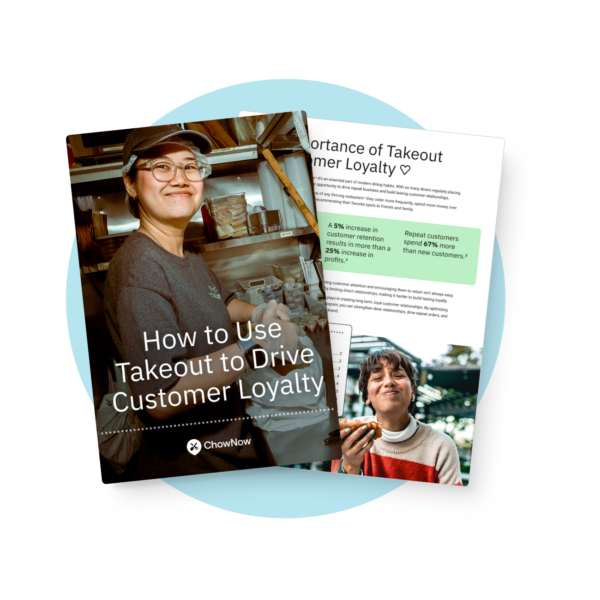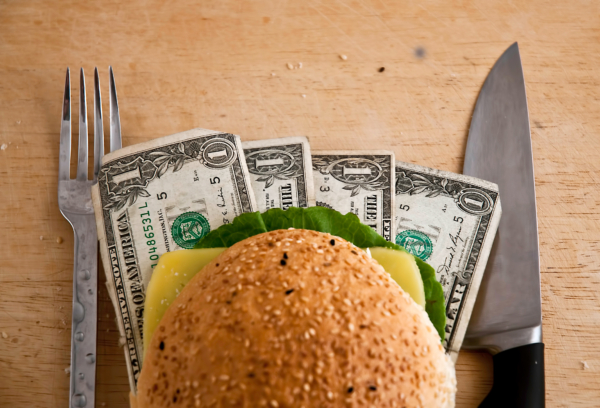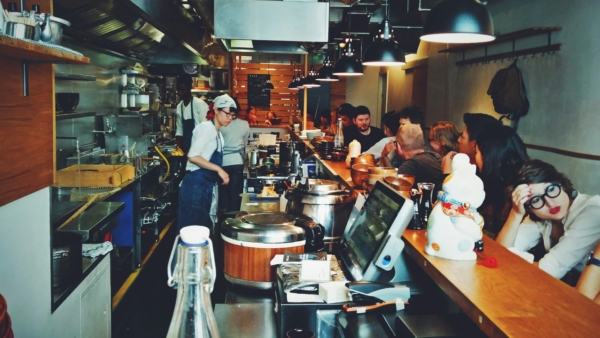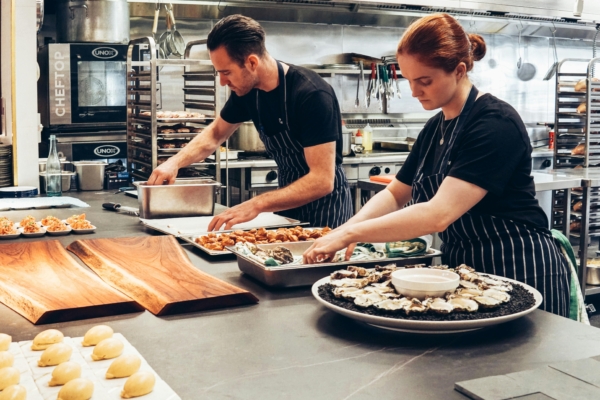Restaurant Financial Planning: A Step-By-Step Guide For Operators

A packed dining room doesn’t always mean a profitable one. You can have great reviews, loyal guests, and an energetic staff, and still be losing money.
The difference between restaurants that thrive and those that struggle often comes down to one overlooked skill: financial planning.
Many restaurant owners excel at hospitality, menu development, and creating memorable experiences. Yet, when it comes to financial management, even seasoned operators can feel out of their depth.
Spreadsheets, cash flow statements, and financial projections might not be as exciting as new recipes or marketing campaigns, but they’re what keep your business running smoothly.
In this article, you will learn how to:
- Assess your restaurant’s financial health with real numbers
- Set clear financial goals tied to daily operations and growth
- Build a repeatable system for restaurant financial planning
Assess Your Current Financial State

Before you can plan for the future, you need to know where your restaurant’s finances stand today. This phase is about getting clear on what you earn, what you spend, and where problems may already be hiding in plain sight.
Start with the big three: income statement, balance sheet, and cash flow
These core financial documents are the foundation of any solid restaurant financial planning process.
Your income statement shows whether you’re making or losing money.
Your balance sheet reveals what you own and owe.
And your cash flow statement tells you if you’re bringing in enough cash to cover your operating expenses.
Together, they give you a full picture of your restaurant’s financial health.
Break down where money comes in and where it goes out

Next, break down your income streams and expenses. Where is your restaurant’s revenue coming from—dine-in, online orders, or catering?
Then look closely at your restaurant expenses, including food costs, labor costs, and overhead costs like rent and utilities.
Tracking these details helps you understand which parts of your business are most profitable and which need improvement.
Identify financial red flags before they become crises
Finally, look for warning signs in your financial reporting—high food costs or labor expenditures, shrinking margins, or low cash reserves.
High prime costs (the combination of food and labor costs) can indicate inefficiencies in purchasing or labor management (issues start to come up when it exceeds 65%), while debt strain or inconsistent cash flow can signal deeper issues in restaurant finance management.
The goal of this step isn’t to overwhelm you with numbers; it’s to build awareness. Once you understand your current financial details, you can start making informed financial decisions that move your business toward stability and growth.
Setting Clear and Measurable Financial Goals
Once you understand your current financial position, it’s time to define where you want to go.
Setting the right goals gives your restaurant’s financial planning strategy purpose, direction, and accountability, turning guesswork into a game plan.

Define goals that align with your restaurant’s stage and vision
Your financial plan should include both short-term and long-term targets. Short-term goals might focus on improving your cash flow, reducing food costs, or hitting weekly sales projections. Long-term goals could include paying off debt, growing your restaurant’s profit, or opening a second location.
These objectives form the backbone of a comprehensive financial plan and can help clarify what growth really means for your operation.
Connect financial goals to operational decisions
Your goals should connect directly to your daily operations. For example, if you want to increase profit margins, you might adjust your pricing strategies, tighten inventory management, or revisit labor management practices.
If your goal is to reduce operating expenses, consider how employee scheduling, energy use, or vendor contracts affect your bottom line.
When your financial management decisions are rooted in your goals, you make progress that’s intentional, not accidental.
Make every goal measurable with restaurant KPIs

To turn your big-picture objectives into actionable plans, set key performance indicators (KPIs) that quantify your progress.
Metrics like prime costs, labor costs, weekly sales targets, or break-even analysis benchmarks keep your team focused on your overall goals.
Regularly tracking these numbers helps you compare actual performance to your revenue targets and make course corrections before issues grow.
Setting clear financial goals turns your financial plan into a roadmap for long-term success. It ensures every operational choice, from menu updates to staffing, supports your larger vision for a successful business.
Build Budgets And Projections You Can Trust

Now that your goals are in place, it’s time to put numbers behind them. A logical, practical budget helps you allocate your resources wisely, make confident decisions, and avoid surprises because in a low-margin business, surprises can be expensive.
Start with revenue forecasts based on real numbers
Use your historical sales data to identify trends by week, month, and season. Factor in local events, holidays, weather patterns, and even economic conditions to get a more accurate picture.
While no forecast is perfect, your best guide for future revenue is your past performance. Pull last year’s sales data from your POS or online ordering system and adjust for what you know is likely to change.
Over time, you can refine your projections as you gather more consistent numbers.
Translate projections into a working budget

Once you have your revenue estimates, turn them into a functional budget.
Include all major expenses:
- Food
- Labor
- Rent
- Insurance
- Marketing
- Maintenance
—plus the small recurring costs that add up over time.
Be accurate about fixed expenses and flexible with variable ones. This isn’t a one-time document; it’s a living tool you’ll revisit and adjust as conditions change.
Build a safety net for the unexpected
Every restaurant hits bumps: equipment failure, a slow month, or a last-minute staff shortage. That’s why every budget needs contingency funds. Setting aside even a small percentage each month can help you stay afloat without cutting corners or going into panic mode.
Use tools to simplify budgeting and keep it accurate

You don’t need an accounting degree to manage your budget well. Modern tools like POS systems, accounting software, and spreadsheets can automate much of the work, giving you quick access to reports and dashboards that visualize your performance.
The key is consistency; regularly review your numbers so you can spot changes early and make informed adjustments before small issues become major setbacks.
A strong budget isn’t about restricting spending; it’s about creating clarity and control so you can confidently make plans that support your long-term growth.
Track Performance Before Problems Snowball
Once your budget and projections are in place, the real work begins: tracking how your restaurant performs against them.
Consistently monitoring your financial performance helps you catch small issues before they turn into bigger problems, while also ensuring your day-to-day choices stay locked in with your larger goals.
Compare actual results to your budget regularly
Set a regular cadence—monthly or quarterly—to compare your actual results with your planned budget and projections. Look at your income, expenses, and margins side by side.
Are you spending more than expected in certain areas?
Are sales meeting your targets?
This comparison helps you understand whether your assumptions were accurate and where you might need to adjust.

Use reports to monitor key benchmarks
Keep a close eye on your core metrics:
- Food cost percentage
- Labor percentage
- Occupancy costs
- Net profit margins
Each of these is a key indicator of your restaurant’s overall financial performance. Certain tools can make this easier to visualize without having to dig through spreadsheets.
Having quick access to this data empowers you to make timely decisions and course corrections.
Keep your managers involved in your financial conversations
Your managers are on the front lines of day-to-day operations, so they need to understand how their decisions affect the financial picture.
Share performance reports with them regularly and talk through what’s working, what’s not, and where adjustments might be needed. When they’re financially informed, they can be financially accountable.
Consistent tracking keeps you proactive rather than reactive, so you can notice early warning signs while there’s still time to act.
Keep Your Plan Flexible With Rolling Forecasts

Financial planning isn’t a set-and-forget-it restaurant business strategy. The restaurant industry changes constantly; seasonal trends, staffing shifts, food price fluctuations, and unexpected challenges can all impact your numbers.
That’s why the most successful restaurant owners treat their restaurant’s finances as living documents that evolve throughout the year.
Adjust your projections as conditions change
Use rolling forecasts instead of static annual ones. This means updating your revenue and expense projections regularly based on what’s actually happening in your business.
If labor costs rise or sales dip, adjust your plan right away instead of waiting until year’s end to find out you missed the mark. Continuous forecasting keeps you agile and better prepared for both slow periods and growth opportunities.
Revise budgets quarterly to stay on track

Instead of relying on one annual budget, which could become outdated in a few months, implement regular check-ins—ideally every quarter.
This cadence helps you align your current numbers with your long-term goals and make course corrections without overreacting. It also creates a habit of reviewing and refining your financial strategy instead of letting it sit untouched.
Shift from static budgets to dynamic planning
Think of your budget as a GPS, not a printed map. The more often you update it, the more accurately it can guide your decisions. Moving to a rolling forecast model allows you to plan proactively, shift resources with confidence, and respond to challenges without scrambling.
It’s not about predicting the future perfectly; it’s about having the ability to quickly adapt to whatever comes your way.
Take Control of Your Restaurant’s Financial Future
Financial stability isn’t luck—it’s the result of deliberate planning and steady action. When you take control of your restaurant’s financial future, you gain the clarity and confidence to guide your business wherever you want it to go.
Contact ChowNow to learn how Direct Online Ordering can support smarter financial planning by increasing direct revenue.
Restaurant Financial Planning Frequently Asked Questions
How do I create a financial plan for my restaurant?
To create a financial plan for your restaurant, start by analyzing your current income, expenses, and cash flow. Then, set measurable financial goals tied to your operations—like improving profit margins, lowering labor costs, or paying down debt. Build a detailed budget and use financial projections based on sales data and seasonal trends to anticipate what’s ahead. A strong plan also includes contingency funds for unexpected expenses and a system for tracking progress monthly or quarterly.
What financial goals should restaurants set?
Common financial goals for restaurants include improving net profit margins, maintaining healthy cash flow, reducing operating expenses, and increasing average order volume.
Goals should align with both short-term needs and long-term growth plans. For example, lowering food costs by a set percentage or increasing revenue by a specific monthly target makes progress measurable and actionable.
How often should I review my restaurant’s financial performance?
Successful operators review financial performance at least once a month and conduct deeper evaluations quarterly. Monthly reviews help you stay on top of labor costs, food costs, and cash flow, while quarterly reviews allow you to update projections and budgets based on current conditions.
Frequent check-ins make it easier to catch issues early and make informed decisions about staffing, pricing, and expenses.
How do I adjust my plan during slow seasons or economic downturns?
When business slows down, review your budget and identify areas where you can temporarily cut costs without sacrificing service or quality.
Adjust labor schedules, negotiate with suppliers, and focus on promoting high-margin items. Keep your forecasts flexible and revisit them monthly to ensure your restaurant remains profitable even with reduced revenue.
Adapting quickly helps protect cash flow and positions you for faster recovery when business picks up.






